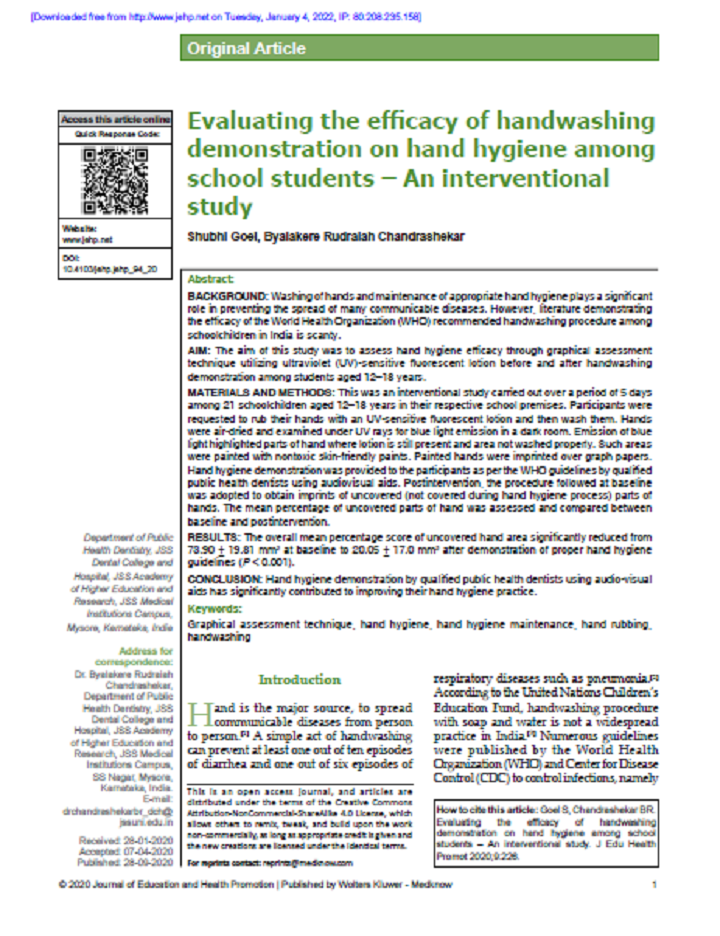Evaluating the Efficacy of Handwashing Demonstration on Hand Hygiene Among School Students. An Interventional Study Goel, S., Chandrashekar, B.R. (2020)
This was an interventional study carried out over a period of 5 days among 21 schoolchildren aged 12–18 years in their respective school premises. Participants were requested to rub their hands with an UV-sensitive fluorescent lotion and then wash them. Hands were air-dried and examined under UV rays for blue light emission in a dark room. Emission of blue light highlighted parts of hand where lotion is still present and area not washed properly. Such areas were painted with nontoxic skin-friendly paints. Painted hands were imprinted over graph papers. Hand hygiene demonstration was provided to the participants as per the WHO guidelines by qualified public health dentists using audiovisual aids. Postintervention, the procedure followed at baseline was adopted to obtain imprints of uncovered (not covered during hand hygiene process) parts of hands. The mean percentage of uncovered parts of hand was assessed and compared between baseline and postintervention.
The overall mean percentage score of uncovered hand area significantly reduced from 73.90 ± 19.81 mm2 at baseline to 20.05 ± 17.0 mm2 after demonstration of proper hand hygiene guidelines (P 0.001).
Bibliographic information
Goel, S., Chandrashekar, B.R. (2020). Evaluating the Efficacy of Handwashing Demonstration on Hand Hygiene Among School Students. An Interventional Study Journal of Education and Health Promotion
Filter / Tags
Guidelines and manualsEnglish
Downloads
Evaluating the Efficacy of Handwashing Demonstration on Hand Hygiene Among School Students. An Interventional Study.
Type: application/pdf
Size: 0.48 MB

